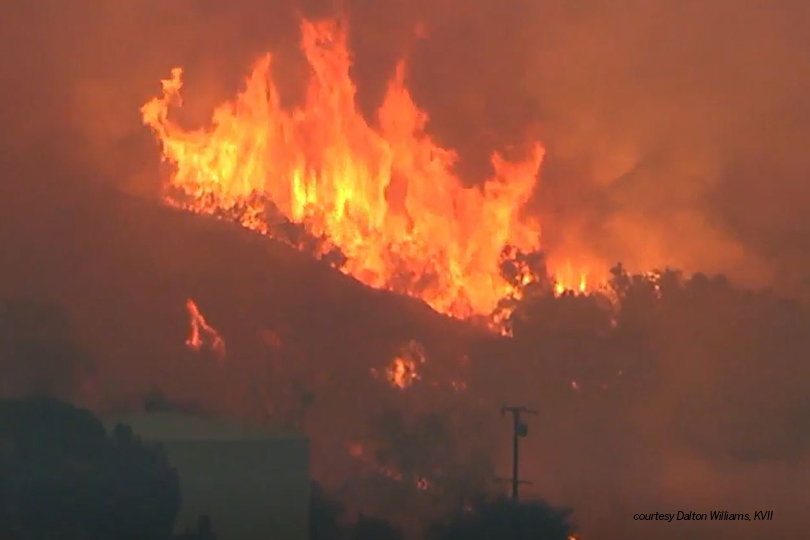By Jennifer Dorsett
Field Editor
Texas Panhandle cotton farmers are worried their crops may not achieve full potential due to some interference from West Coast wildfires.
Smoke from multiple West Coast wildfires made its way to the Panhandle, introducing an unknown variable as the region’s cotton crops finish maturation, according to Wes Beal, grain department manager for Equity Exchange in Perryton.
“Heat units are normally a big concern for cotton farmers in this area,” Beal told Spearman’s KXDJ-FM in a recent radio interview. “But the one thing we don’t have a lot of data on is all this smoke in the air. When we look at heat units, they’re derived by looking at the high and low temperatures and a couple of other factors, but those are pretty well based upon sunshine, blue-sky days.”
Heat units measure the amount of useful heat a cotton plant accumulates each day, according to published materials from the Texas A&M University Soil & Crop Sciences department.
From planting to harvest, cotton plants need about 2,600 heat units to develop to full maturity.
The formula is a good predictor of when a cotton crop will be ready to harvest, but smoke or extremely cloudy conditions may impact the amount of heat reaching cotton plants, causing a misalignment between heat unit calculation and actual accumulation.
In mid-September, smoke was thick enough to impact daily temperatures in the Panhandle, despite being 1,500 miles away from the wildfires.
“We had quite a bit of haze earlier this morning. In fact, you couldn’t even see the sun crest the horizon, there was that much in the air. And what that does to our temperatures is, usually, we need that radiation from the sun to warm up in the middle of the day, well even in the beginning of the day in the mornings,” Amarillo’s ABC affiliate meteorologist Corbin Voges said in a report on Sept. 18. “Now, when we have all that smoke there that slows that process down and so, instead of getting to maybe 85 by lunchtime, we’re only sitting in the 70s because we’re not getting as much radiation from that sun.”
Social media updates from the U.S. National Weather Service Station Amarillo have reported smoke accumulation in area skies as far back as August.
So, what does this mean for the area cotton crop? Beal said no one really knows yet.
“When you put a filter on the sun coming down, how does that affect things?” he said. “That’s something we’re kind of learning as we’re going here.”

